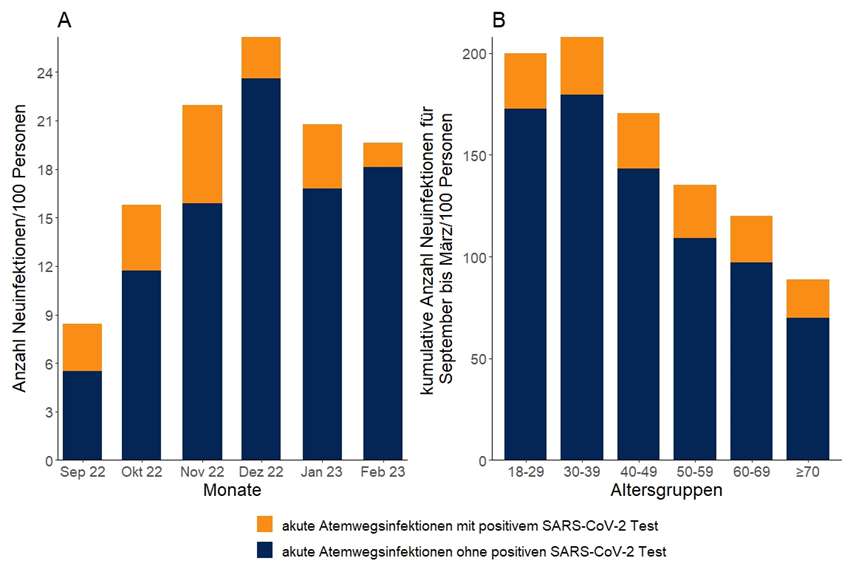Last spring 2023, as part of our survey on acute respiratory diseases, we asked participants about the cold season in autumn/winter 2022/2023. 37,708 DigiHero participants reported a total of 54,813 acute respiratory illnesses. For 79% of these diseases, we were also provided with the results of a SARS-CoV-2 test. This allowed us to identify 9,358 infections as COVID-19 diseases. This means that 25% of DigiHero participants were infected with SARS-CoV-2 during the winter of 2022/2023. Figure A shows the monthly new infections we calculated for acute respiratory diseases with and without a positive test for SARS-CoV-2. An analysis by age group showed that young DigiHero participants in particular became infected with acute respiratory diseases (see Figure B).
Figure A and B: Number of new infections of acute respiratory diseases with and without a positive SARS-CoV-2 test in the season 2022/2023, A) per month, B) per age group. (translated version, original https://doi.org/10.1016/j.ijid.2024.107057, Creative Commons Licence https://creativecommons.org/licenses/by-nc-nd/4.0/)
